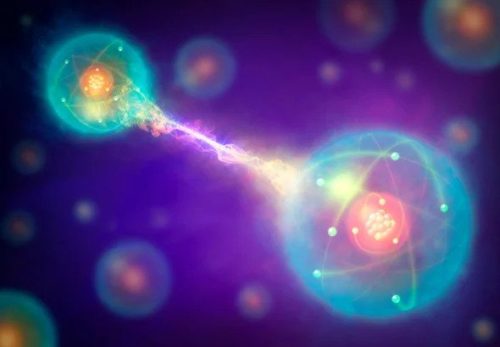Quantum entanglement is a complex phenomenon in physics that is usually poorly described as an invisible link between distant quantum objects that allows one to instantly affect the other. Albert Einstein famously dismissed this idea of entanglement as “spooky action at a distance.” In reality, entanglement is better understood as information, but that’s admittedly bland. So nowadays, every news article, explainer, opinion piece and artistic interpretation of quantum entanglement equates the phenomenon with Einstein’s spookiness. The situation has only worsened with the 2022 Nobel Prize in Physics going to Alain Aspect, John F. Clauser and Anton Zeilinger for quantum entanglement experiments. But it’s time to cut this adjective loose. Calling entanglement spooky completely misrepresents how it actually works and hinders our ability to make sense of it.
In 1935, physicist Erwin Schrödinger coined the term entanglement, emphasizing that it was “not one but rather the characteristic trait of quantum mechanics, the one that enforces its entire departure from classical lines of thought.” He was writing in response to a famous paper (known simply to physicists as the EPR argument) by Einstein, Boris Podolsky and Nathan Rosen, that claimed quantum physics was incomplete. The New York Times headline read, “Einstein attacks quantum theory,” which solidified the widespread perception that Einstein hated quantum physics.
The EPR argument concern >>> Read More

